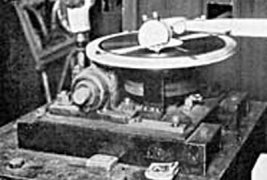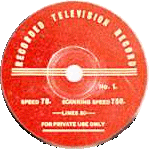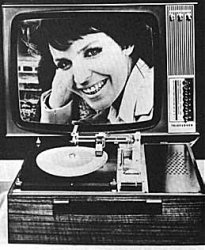Ancient History: The Baird Television Record
Naturally, this well-known technique was tried for video, and in fact the first video format of all was the Baird Televison Record - also known as PhonoVision - which was first demonstrated by John Logie Baird in 1927.
Baird's Phonovision recorder
The camera was in the "shed" in the background; the record's rotation is driven by the shaft emerging from the hole, to keep it in synch with the camera's scanning disc
The camera was in the "shed" in the background; the record's rotation is driven by the shaft emerging from the hole, to keep it in synch with the camera's scanning disc


